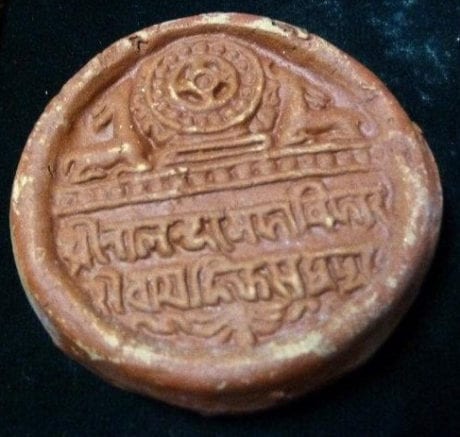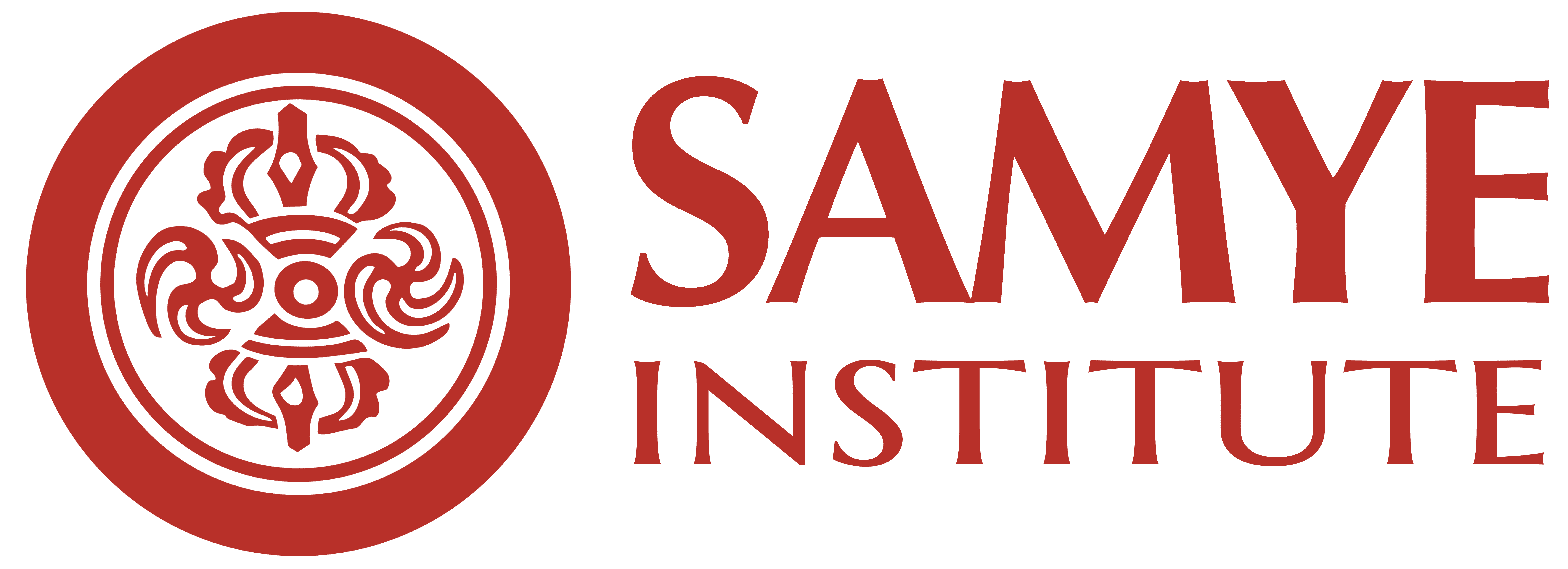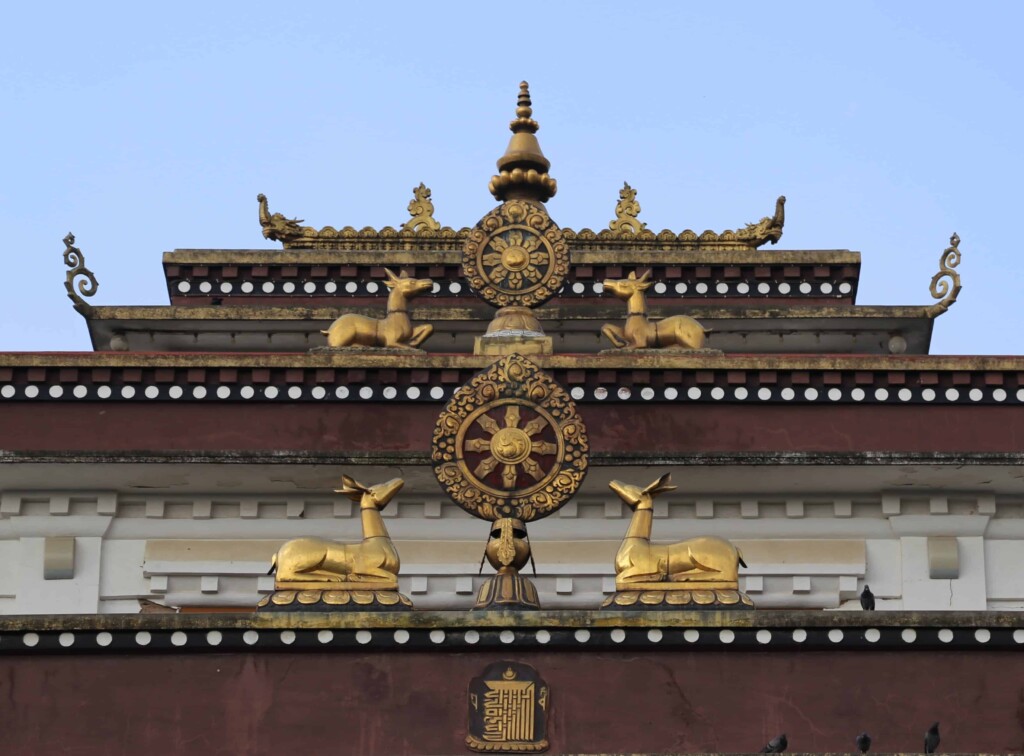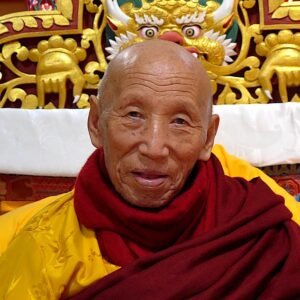Dharma Wheel and Pair of Deer atop Monastery Roofs
Art can function in spiritual traditions as more than just something to admire. Spiritual artists use visual images to express important messages. Buddhist cultures throughout the world use sculpture and painting to transmit core teachings. We may certainly enjoy decorative touches for their beauty, yet we may also appreciate them more when we understand the meaning. And as we observe more closely, we may notice that certain representations, such as the Dharma wheel, appear frequently. Additionally, monastery roof-tops feature the Dharma wheel with two deer gazing steadily at it. Why do we see this in every monastery?
Here we offer an excerpt from Khenpo Gyaltsen’s A Lamp Illuminating the Path to Liberation: An Explanation of Essential Topics for Dharma Students. Khenpo explains the symbolism of this important monastery adornment.
Pair of deer symbolism
As Buddhists, when visiting a monastery, the first thing we see is a pair of male and female deer at either side of an eight-spoked dharma wheel at the highest point of the monastery roof. Regarding the essential meaning of the dharma wheel, from a historical perspective it is said to have been offered in the form of a thousand-spoked wheel to Śākyamuni Buddha by Brahma when requesting him to teach the sacred dharma. At that moment, from the forest came a pair of male and female deer, also known as the krishnasara (Tib. kri sha na sa ra) antelope of compassion. With unblinking gaze, they looked at the wheel with joy and delight.
Subsequently, the Buddha related the noble eight-fold path*** with the wheel. Likewise, he related the male and female beings whose mind-streams are touched by this path with the pair of male and female deer. Ever since then, the wheel flanked by a pair of deer has been a special symbol for Buddhists.
Dharma wheel symbolism
The eight-spoked wheel represents the first turning of the dharma wheel by the Buddha. The male and female deer on the right and left represent the male and female disciples who one-pointedly enjoy and take pleasure in listening to the teachings of the holy dharma.
The interior eight spokes represent the moral conduct of discipline from among the Three Trainings. The intermediate eight spokes represent the training in wisdom and the noble eight-fold path. The outer eight spokes represent the training in samādhi, or meditative concentration.
The entirety of the Buddha’s teachings are contained within the Three Trainings and noble eight-fold path. The pair of deer represent skillful means and wisdom, and based upon the unity of skillful means and wisdom, buddhahood can be attained.
In brief, just as all the world’s different religions and countries have their own symbols and insignia, the dharma wheel with the pair of deer is the sign of Buddhism. Furthermore, this symbol was also the seal of the glorious Buddhist University of Nālandā in India long ago.

This teaching is an excerpt from:
A Lamp Illuminating the Path to Liberation: An Explanation of Essential Topics for Dharma Students by Khenpo Gyaltsen (translated by Lhasey Lotsawa Translations, Nepal: 2014, pp. 247-8). For more information please visit https://lhaseylotsawa.org/books/a-lamp-illuminating-the-path-to-liberation.
The eight-fold path of the noble ones
The eight-fold path of the noble ones involves the practice of:
“Correct” or “Right”
- View or Understanding
- Thought
- Speech
- Action
- Livelihood
- Effort or Application
- Mindfulness
- Concentration or Meditation










Responses